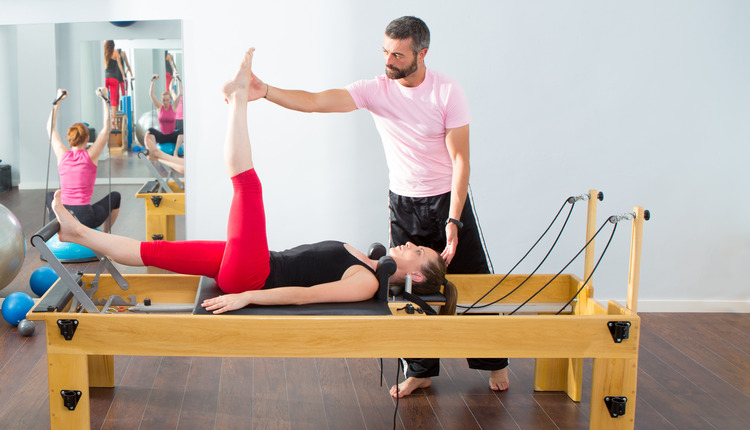
Static exercises are a great addition to so many fitness classes. But have you ever thought of these exercises as a great way to improve mental focus? Sure, Isometrics require incredible amounts of strength and endurance, but they also build stamina and perseverance in the mind. Many static moves are directly related to yoga poses! Like yoga poses, these exercises will help your clients build a solid mind body connection. They are also very effective because they work the big muscle groups along with the small areas, like the ligaments and tendons. In addition, they are amazingly good for the core! Clients will get so much with so little movement.
As trainers, we are not only responsible for the physical parts of an exercise. Our job is also to teach people mental toughness as well. Here are a few cues for trainers to help clients find that connection while working on a static exercise:To work through the uncomfortable burn, remind them to breathe! For motivation, tell them that if they can breathe in and out once, they can do it twice, three times and so on. Before they know it, the exercise will be over.
Have them think about the muscles they are using while holding the exercise. When doing Isometrics, there is no movement, but the muscle fibers are contracting and not letting go. If they can focus and picture the actual muscle fibers contracting, they may be able to get into the hold deeper and even keep themselves there longer.
Tell them to engage their core by pulling their belly button back towards the spine, essentially squeezing the stomach muscles, drawing them in and up. Their core is their center. If their center is tight and strong, the other muscles are better supported. By executing the core muscles properly, they will attain the staying power they need to keep going.
Urge them not to hold tension in the wrong places, like the back of the neck, shoulders, and jaw. Instead, push all the tension into the muscles used for the exercise. Continuously ask them to scan their bodies, making sure the contraction is in the right place(s).
Finding a focal point is also a very effective way to get through holding static exercises. Instruct clients to look at a point within their natural eye gaze, making sure the point is not moving. This helps move into a deep state of concentration because the gaze is fixed on a certain point, allowing awareness to focus inward. It is important not to strain the eyes, instead keeping the eyes soft. This will also allow your clients to get into their “zone”.
As trainers, we are not only responsible for the physical parts of an exercise. Our job is also to teach people mental toughness as well. Here are a few cues for trainers to help clients find that connection while working on a static exercise:To work through the uncomfortable burn, remind them to breathe! For motivation, tell them that if they can breathe in and out once, they can do it twice, three times and so on. Before they know it, the exercise will be over.
Have them think about the muscles they are using while holding the exercise. When doing Isometrics, there is no movement, but the muscle fibers are contracting and not letting go. If they can focus and picture the actual muscle fibers contracting, they may be able to get into the hold deeper and even keep themselves there longer.
Tell them to engage their core by pulling their belly button back towards the spine, essentially squeezing the stomach muscles, drawing them in and up. Their core is their center. If their center is tight and strong, the other muscles are better supported. By executing the core muscles properly, they will attain the staying power they need to keep going.
Urge them not to hold tension in the wrong places, like the back of the neck, shoulders, and jaw. Instead, push all the tension into the muscles used for the exercise. Continuously ask them to scan their bodies, making sure the contraction is in the right place(s).
Finding a focal point is also a very effective way to get through holding static exercises. Instruct clients to look at a point within their natural eye gaze, making sure the point is not moving. This helps move into a deep state of concentration because the gaze is fixed on a certain point, allowing awareness to focus inward. It is important not to strain the eyes, instead keeping the eyes soft. This will also allow your clients to get into their “zone”.













